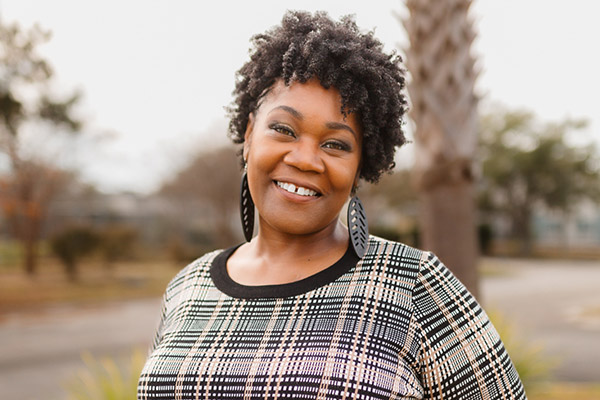.jpg)
By Allison Denney
Massage therapy has become a wildly expansive net that has caught, and continues to catch, a slew of methods of bodywork. What was once simply an intuitive pushing and pulling has morphed into a veritable trawl that has gathered techniques, modalities, and acronyms that practitioners specialize in all around the world. You can be an authority in all sorts of approaches, spanning from myofascial release to trigger point therapy to cupping to manual lymphatic drainage. And that’s a good thing! For a client who knows they need definitive work, there are therapists out there who spend years becoming very good at what they do. But, there is a flip side.
Going too far down a rabbit hole can blind us from the big picture. The quest for research-based practices has given us a lot of information about why the work we do works. What I have found to be the most compelling information gleaned, though, is that a lot of this research supports what we’ve always known—that massage therapy moves things around, and this movement is vital to our health. The act of compressing into the tissues that define us and moving them in all sorts of directions is not only beneficial to our well-being, it also just feels really good. The details can be individualized—depth, speed, focus—but the common denominator here is that the change created with the forces we apply results in happier humans on this planet.
But because humans are humans, and we figured out that pushing and pulling on our aching backs and stiff joints helps get us back on our feet and doing the things we love, we, of course, wanted more. More relief, more days without pain, more intense bodywork—because if a little work felt good, more work must feel great! And in that search for more, we may have lost sight of the basic truth. Massage and bodywork affects us on levels that run deeper than the neuromuscular or kinetic pathway components. Things move. And movement is essential to life.
The Quiet Lymph and Blood Movement
When most of us receive a massage, we tend to be focused on the two big elements: muscle tissue and connective tissue. We book a massage when we feel sore, stiff, achy, or in pain. And for the most part, helping muscles feel better and getting connective tissue “unstuck” is the end goal. What we don’t focus on as often is the feeling that our blood has slowed down or our lymph is not doing its job. I’ve never had anyone come into my office and say, “I am here because I can’t feel my lymph moving through my lymph nodes the way I want it to. Can you help?”
While the trigger point therapy may have calmed a fiery knot or the myofascial release might have helped increase range of motion, the secondary massage benefits of moving blood and lymph through an area tend to be the unsung heroes. It’s like waking early to go for a walk or a run before starting your day. In the most immediate sense, you’re proud of yourself and your ego feels slightly inflated about being fit. But in the long term, you’ve done something healthy, and all your internal processes are working better because of it. Quietly, in the shadows, blood and lymph move through our bodies and shoulder massive responsibilities to keep us healthy. Massage, whether we are conscious of it or not, offers them a nice pat on the back.
Our circulatory and lymphatic systems are highly specialized. If one wanted to, one could home in and become an expert in all things circulatory or lymphatic. There’s no doubt it is advantageous in understanding how blood gets the goods to a muscle or the stubborn-but-practical, one-way direction of lymph. Before we could see under the skin, though, the ancient arts of tui na or shiatsu calmed the anxious soul or invigorated the weary. How we have come to understand the energy systems of the body has changed. A lot.
How Massage Improves Circulation and Blood Flow
Let’s dig a little deeper into these essential fluids. The modern breadth of science has explored and revealed exactly what is happening as we push and pull on muscles and soft tissue. We may not be able to massage a sore artery or release a stagnant lymph node, but we can, and we do, influence how these vessels handle the fluids they house.
One of the first things we learn in massage school is that our work increases blood flow. And if you think about it, that sounds a little ridiculous. I mean, it doesn’t actually increase the rate at which your blood flows. But it does help loosen up the tissues that can clamp down on capillaries and limit the flow of blood. And blood is how muscles get their nutrients. So, we offer a little effleurage and a little petrissage; things get unstuck and sore muscles feel better. Our ability to help this vital fluid get to its intended destination is like helping an elderly person with their groceries. You may not be performing heart surgery, but you’ve certainly made someone’s life a little easier.
Lymph Flow—Same, But Different
Lymph is the same in that it is a fluid, but it’s also different. As the element in the body that is responsible for cleaning up messes that the rest of the parts seem to make by doing their jobs, lymph travels in one direction with one purpose: Lymph vessels pull wayward fluids in, where it conveniently becomes what we call “lymph,” and heads to the heart to be converted back into blood. Along the way, it travels through lymph nodes as a sort of spin cycle flocked with cleaning agents. Like some sort of professional sniper attack, the targeting and removal of unwanted infections and diseases happens here. Swollen lymph nodes may be uncomfortable, but they are a good sign that your body is doing its job.
With a more focused intent of direction and rhythm, massage helps lymph vessels move that fluid along, just in case there are any traffic jams or vessel clutter. Granted, standing up and walking can also do the same job. As science has revealed, the swelling that happens when a muscle contracts also helps pump this fluid in its intended direction, as does the mere pressure on our feet as they strike the floor with each step. But, as you may already be aware, the body doesn’t always function at full capacity and can use some help every now and then.
So, lymph is not the same as blood, but it is. Both blood and lymph are critical to our physical and mental capacities. Just ask anyone who is anemic or has an autoimmune disorder. And while the work of massage therapists and bodyworkers has a direct impact on an overused muscle or a restricted joint, its influence on the fluids that flow cannot be overlooked.
Most of the time, we have to work hard to keep ourselves going. Getting a massage is a little like moving without moving. Powering up from the inside will never be replaced, but a little assisted motion from the outside can be as significant as using a rain jacket to get you through a storm.
Massage Keeps Things Flowing
There is a saying in traditional Chinese medicine: “Movement is life. Stagnation is death.” We thank you, science, for helping us understand why this is a profound statement. But also, thank you, intuition, for guiding us when we could not see. All that pushing and pulling has done wonders from the beginning. How we understand it all has expanded our abilities to help the human form perform more humanly. The constant remains, though. Massage and bodywork keep things flowing. And that is a good thing.
author bio
Allison Denney is a columnist for Massage & Bodywork magazine. You can read her column, “The Rebel MT,” in the digital edition at massageandbodyworkdigital.com.

